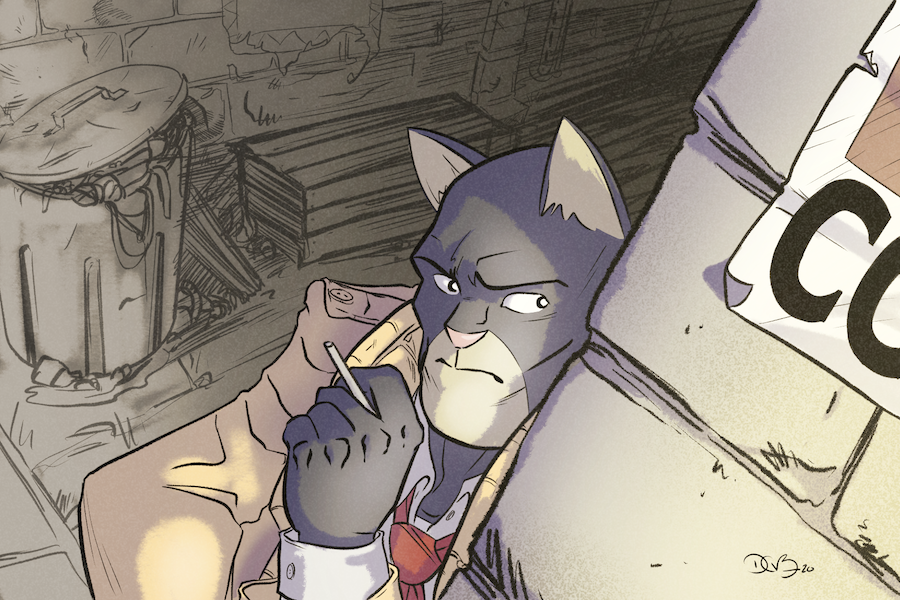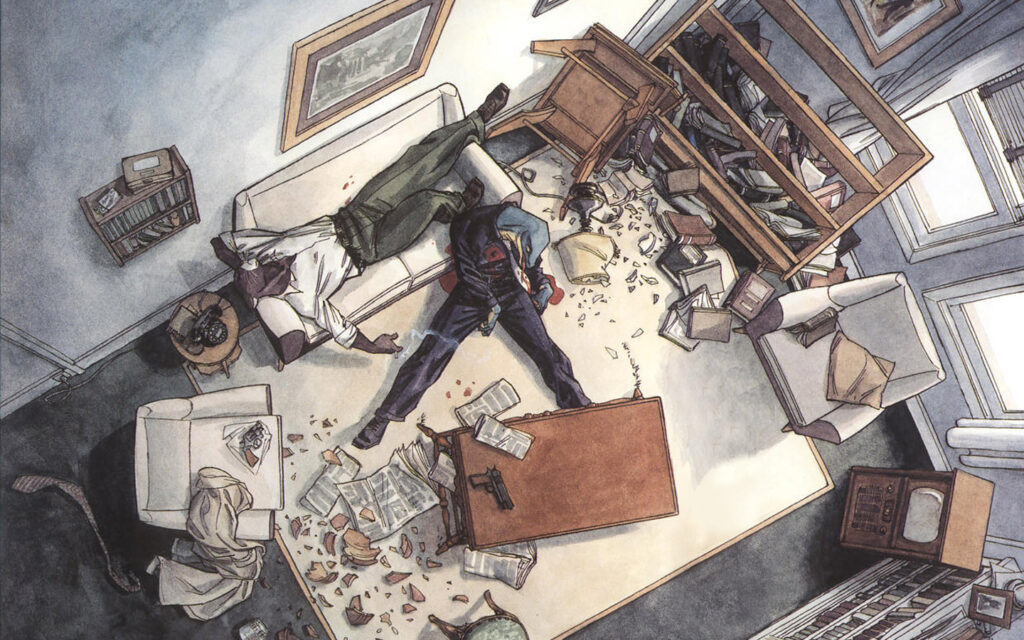Sketch Fridays #78 – Blacksad

Blacksad was a comic I pined for.
It wasn’t out of reach for cost or even low print runs. The fact was that, until relatively recently, it was a European comic––made by Spanish creators Juan Díaz Canales (writer) and Juanjo Guarnido (artist)––about anthropomorphic animals in a hard-boiled post-World War II New York City, tackling the issues of murder, extortion, racism, and drug use head-on. All while told in beautiful pen, ink, and watercolor pages that looked like a strange, alternate reality Disney animated film.
I saw the comic in low resolution images online in the early 2000s, and hungrily harvested the jpgs from web searches. It wasn’t until 2010 when an official English translation was published by Dark Horse Comics, collecting the first three stories in one bundle, which I preordered as soon as I heard about it. Receiving it––and reading it––was a bit like finding a buried treasure. Unlike the hollow greed associated with those stories, Blacksad was everything I hoped it would be.
Since then, two more stories have come out––and the stories have wonderful names dripping with noir flair such as “A Silent Hell” and “Somewhere in the Shadows”––and I pick them up as soon as they hit shelves because it’s a comic that, for me, ticks all the boxes.

It’s a comic of “despites”––despite being populated by anthropomorphized animals, Blacksad is a hard-boiled noir story. Despite being a hard-boiled noir story, it’s not afraid of taking place during the day, with low contrast lighting and saturated colors. Despite the cartoony designs, the book takes the characters very seriously and the technical ability of artist Juanjo Guarnido is astounding and masterful (Guarnido worked as an animator for Disney), giving nuanced life to these talking cats, weasels, and bears. Despite being a series of seemingly cliche noir stories, the characters have surprising depth and the narratives are motivated by serious and pertinent, modern themes. Because of all of that, I love it. (Honestly, for the closest cinematic version we have so far, check out Disney’s Zootopia; it’s like Blacksad but without the violence or nudity.)
Reading Blacksad in a sense gave me permission––along with Darwyn Cooke’s Parker series––to tell serious, sober stories with a cartoony style. One of the hesitations I had approaching Long John was that I worried people wouldn’t want to read a serious story with such stylized designs. Reading books like Blacksad, however, I learned that if people didn’t like it, that’s too bad for them because they’re missing out.

Discussion ¬